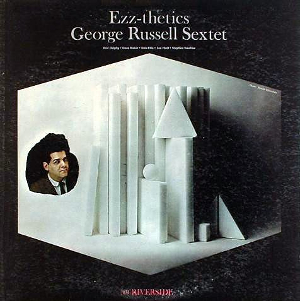Piano Sheets > George Russell Sheet Music > Ezz-thetics (ver. 1) Piano Sheet
Ezz-thetics (ver. 1) by George Russell - Piano Sheets and Free Sheet Music

About the Song
Other avaliable versions of this music sheet: Version 1 Version 2
Ezz-thetics is an album by a sextet led by the jazz composer and music theorist George Russell. It features a re-reading of Russell's title composition and a radical reworking of Thelonious Monk's standard Round Midnight with an extended solo by Eric Dolphy. The title song, "Ezzthetic", was dedicated to, in Mr. Russell's own words, "the late, great heavyweight boxing champion of the world, Ezzard Charles". The recording features trombonist Dave Baker whose trombone career was cut short causing him to take up the cello: he went on to become a major composer of jazz and modern classical music. Don Ellis went on to lead his own successful big band. George Russell was awarded the MacArthur "genius" in 1989 and is captured here in a rare piano appearance. Eric Dolphy was a major artist in the "New Thing" branch of jazz but also appeared with Charles Mingus in one of his greatest small groups: Dolphy.
Download this sheet!
About the Artist

Random article
How to locate free sheet music easily If you want to learn how to play piano then having access to free sheet music can be an inexpensive and great way to learn! There are plenty of websites online, which offer you high quality sheet music free. Here are some ways you can locate these sources for your benefit.
The concept of free
If a site provides sheet music, which you can download and print without any infringement of copyright or violations then this is free sheet music. Some websites may have a prerequisite of attaining membership via subscriptions to newsletters or registering with an account. In order to arrive at sites providing no obligation free sheet music, it may take a bit of effort and patience but the results are worth it!
(More...)
